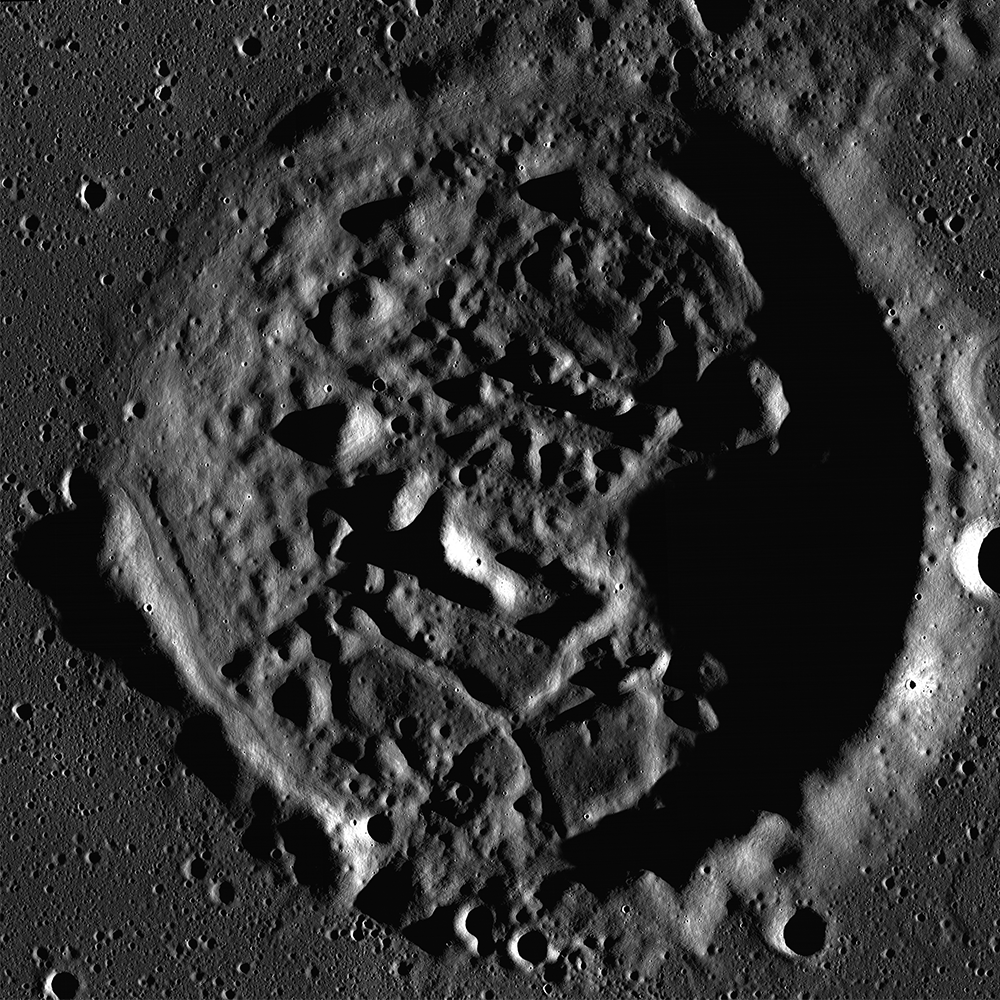
This crater is one of several similarly shaped craters in Mare Moscoviense. These craters are pockmarked by craggy peaks and fractured floors. The dramatic illumination in the opening image, with the sun low on the horizon, exaggerates the crater's lumpy topography.
This crater, and others like it, represent one type of volcanically modified impact crater. The floor of the crater, shown in detail below, is not much below the surface of the surrounding volcanic plains, and looks nothing like a typical fresh impact crater, such as Giordano Bruno or simple bowl-shaped crater like this one on the farside. Sharp boundaries with flat-lying mare basalts around the crater rim (arrows) indicate where the crater was once surrounded (embayed) and nearly covered by large outpourings of lava. Only the upper part of the crater rim remains.
How did this crater get so lumpy inside? Did volcanic materials push up from beneath the crater floor? Did molten lava intrude through fractures or low points in the crater rim and walls? Did the heat of nearby lava and magma deform the crater like hot plastic? The answer may be a combination of these processes, though most scientists think that the changes in crater shape occur mainly as a result of magma intruding from below.
Explore this crater and two more like it in entire NAC mosaic.
Re-visit these other volcanically modified impact craters:
A Colorful History of Floor Fractured Komarov
Published by J. Stopar on 11 March 2014
